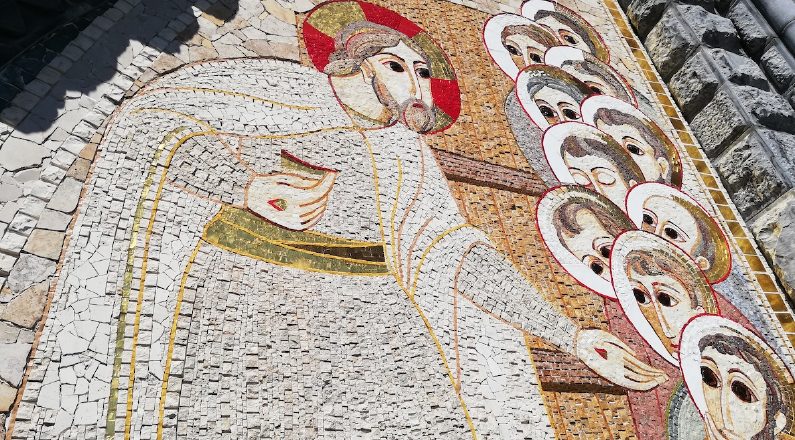(ZENIT News / Lourdes, France, 07.02.2024).- In response to allegations of abuse against the artist Marko Rupnik, the Bishop of Lourdes has expressed a personal stance favoring the removal of Rupnik’s mosaics from the revered sanctuary. This perspective aims to respect and support the victims of the alleged abuses by the former Jesuit.
Bishop Jean-Marc Micas of the Diocese of Tarbes and Lourdes released a statement on July 2, 2024, highlighting the sensitive issue of retaining Rupnik’s artwork, which is prominently displayed at the entrance of the Basilica of Our Lady of the Rosary. The bishop underscored the pain and trauma that these mosaics evoke for the victims, citing that many have voiced their distress over the artworks’ continued presence.
In the statement, Bishop Micas recounted the formation of a commission between May and October of the previous year. This commission, comprising abuse survivors (both French and international), sacred art experts, lawyers, abuse prevention advocates, and Lourdes chaplains, was tasked with addressing the complex issue. The bishop has also sought counsel from various stakeholders, including cardinals, bishops, artists, lawyers, victims, and pilgrims.
The discussions revealed a spectrum of passionate and polarized opinions. Some advocate for the mosaics to remain, while others call for their destruction or relocation. “There is no consensus,” noted Bishop Micas, who shared his personal opinion that the situation is unique due to the living status of both the artist and the victims, differentiating it from historical cases where the individuals involved are long deceased.
Emphasizing the sanctuary’s mission to provide solace to all, especially those suffering from abuse, Bishop Micas stated, “At Lourdes, those who are suffering and need comfort and healing must come first.” He acknowledged the opposition to the removal of the mosaics but maintained that the well-being of the victims should be prioritized. “My personal opinion is that it would be preferable to remove these mosaics,” he declared, although he admitted that this decision is not yet widely accepted and faces significant resistance.
Bishop Micas emphasized that a definitive resolution has not yet been reached, acknowledging that any premature decision could exacerbate division and violence. He committed to ongoing collaboration with abuse survivors to support their healing. Additionally, as an interim measure, the bishop decided to discontinue highlighting the mosaics during the nightly Marian procession, a step towards addressing the concerns raised.
The bishop concluded by inviting the participation of individuals of good will to help determine future actions, indicating a willingness to adapt and find a solution that respects the needs and voices of those affected by Rupnik’s actions. This ongoing dialogue and sensitivity to the issue exemplify the Church’s evolving approach to handling the complex intersection of art, abuse, and healing.
Thank you for reading our content. If you would like to receive ZENIT’s daily e-mail news, you can subscribe for free through this link.



